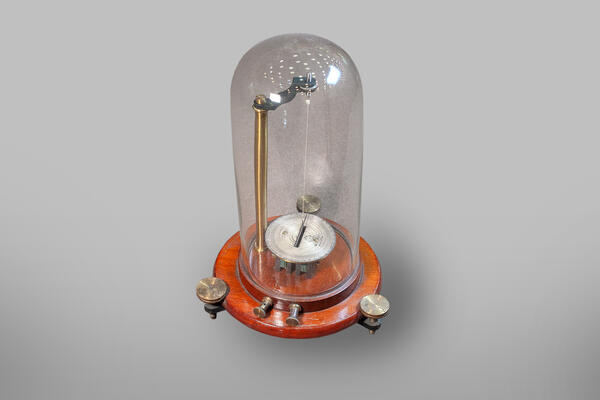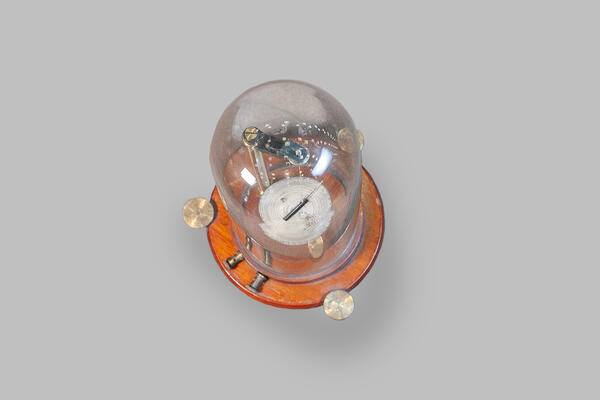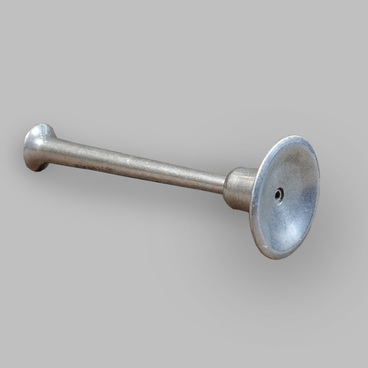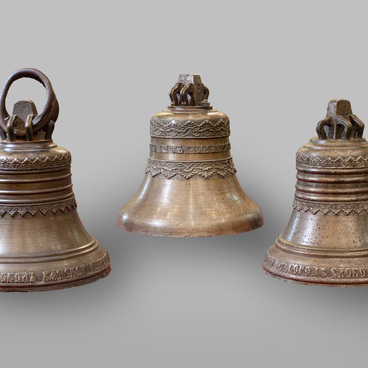The “Vyatka Men’s Gymnasium” section of the exhibition “Characters and Events of Vyatka History” features an old device with an unusual appearance. This is a galvanometer — a highly sensitive instrument for measuring small amounts of current. A galvanometer could measure not only the current but also the voltage and other characteristics, which was very useful for measurements.
The device was named after Luigi Galvani, an Italian physician, anatomist, physiologist, and physicist, one of the founders of electrophysiology and the theory of electricity, and the founder of experimental electrophysiology.
In Vyatka, a galvanometer was used by senior students of the local men’s gymnasium. The gymnasium was opened on November 21, 1811 with the active participation of the governor Fyodor Ivanovich von Bradke, who was a zealous promoter of education. He said, “I see no other way but for parents to provide education to their children by investing their own capital, and the result of such investment cannot be taken away by any accident or misfortune.”
The gymnasium provided high-quality education, with teachers invited from universities in St. Petersburg and abroad. Vasily Petrovich Khvatunov, a graduate of Kazan University and a professor of physics and mathematics, proved to be an outstanding teacher. During his classes, students were extremely focused and listened to him attentively. The teacher actively used experiments and a variety of instruments, including a galvanometer. Khvatunov managed to make the gymnasium the district’s best school in terms of mathematics and physics. Gymnasium students who satisfactorily passed the exams after seven years of study could enter universities in Kazan, Moscow, and St. Petersburg without entrance exams.
In Vyatka, the gymnasium was known as “Vyatka University”. Its students included the outstanding scientist Konstantin Eduardovich Tsiolkovsky, the founder of cardiovascular surgery Alexander Nikolayevich Bakulev, the psychoneuropathologist Vladimir Mikhailovich Bekhterev, the archaeologist Alexander Andreyevich Spitsyn, the astronomer Matvey Matveyevich Gusev, the artist Yuri Alexeyevich Vasnetsov, and the plant breeder Nikolay Vasilyevich Rudnitsky.
The device was named after Luigi Galvani, an Italian physician, anatomist, physiologist, and physicist, one of the founders of electrophysiology and the theory of electricity, and the founder of experimental electrophysiology.
In Vyatka, a galvanometer was used by senior students of the local men’s gymnasium. The gymnasium was opened on November 21, 1811 with the active participation of the governor Fyodor Ivanovich von Bradke, who was a zealous promoter of education. He said, “I see no other way but for parents to provide education to their children by investing their own capital, and the result of such investment cannot be taken away by any accident or misfortune.”
The gymnasium provided high-quality education, with teachers invited from universities in St. Petersburg and abroad. Vasily Petrovich Khvatunov, a graduate of Kazan University and a professor of physics and mathematics, proved to be an outstanding teacher. During his classes, students were extremely focused and listened to him attentively. The teacher actively used experiments and a variety of instruments, including a galvanometer. Khvatunov managed to make the gymnasium the district’s best school in terms of mathematics and physics. Gymnasium students who satisfactorily passed the exams after seven years of study could enter universities in Kazan, Moscow, and St. Petersburg without entrance exams.
In Vyatka, the gymnasium was known as “Vyatka University”. Its students included the outstanding scientist Konstantin Eduardovich Tsiolkovsky, the founder of cardiovascular surgery Alexander Nikolayevich Bakulev, the psychoneuropathologist Vladimir Mikhailovich Bekhterev, the archaeologist Alexander Andreyevich Spitsyn, the astronomer Matvey Matveyevich Gusev, the artist Yuri Alexeyevich Vasnetsov, and the plant breeder Nikolay Vasilyevich Rudnitsky.






